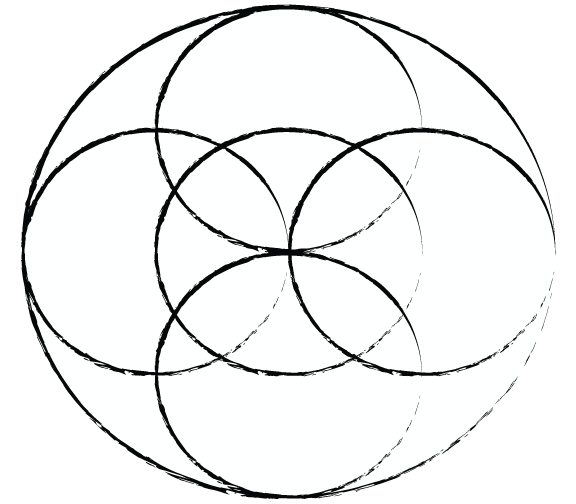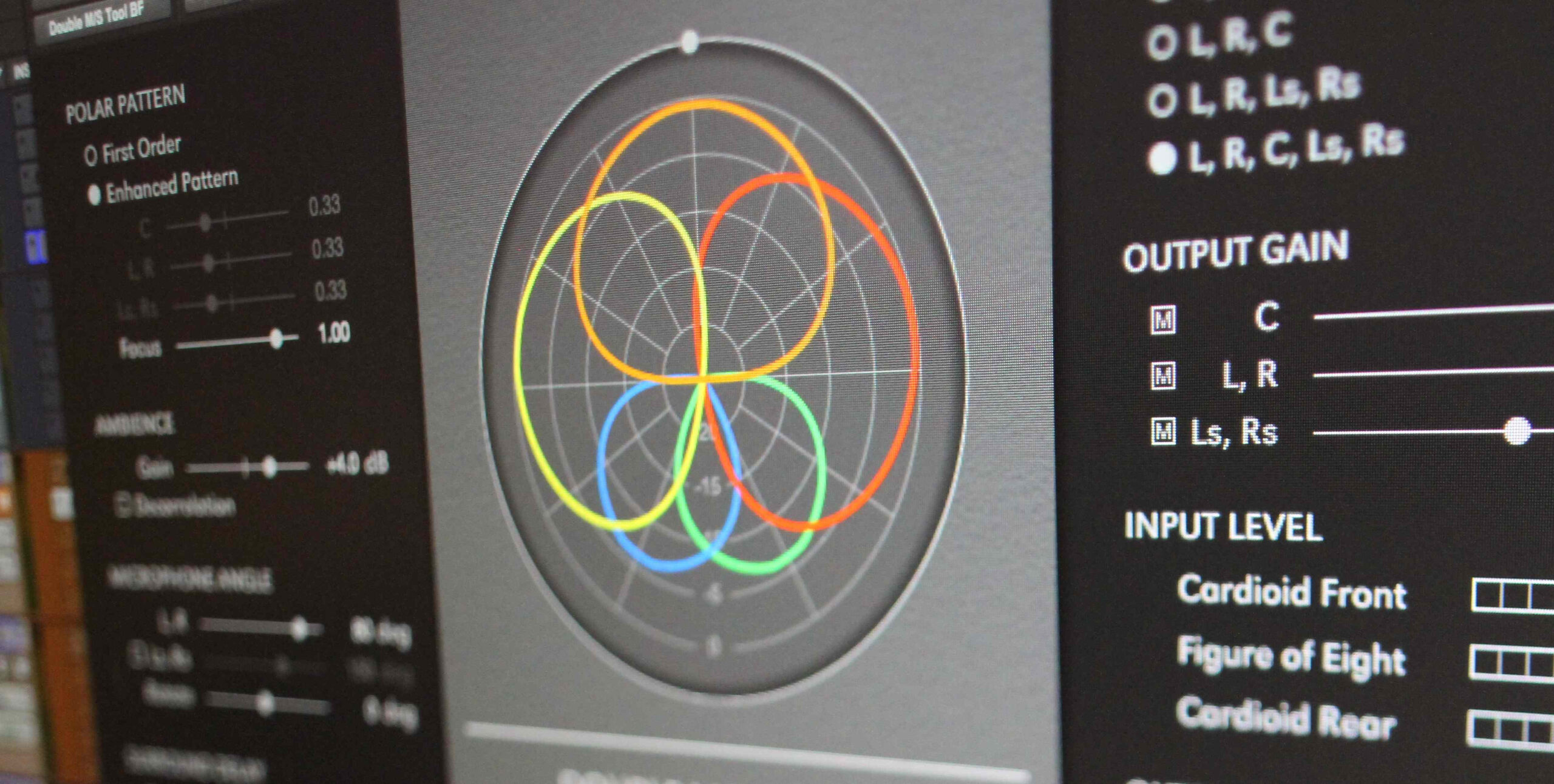What is Ambisonics and why should I buy ambisonic libraries?
That is a big question! Wikipedia describes ambisonics as “full-sphere surround sound technique: in addition to the horizontal plane, it captures sound sources above and below the listener”. Where ambisonics differs from a traditional techniques is that it is not dependent on speaker positions. A simple way to visualize this is to examine stereo recording techniques. When we utilize the A – B or XY stereo recording methods, the maximum derived speaker layout will be two channel stereo (with exception to Mid-side). Additionally, we will have a fixed position in the sound field.
1st order Ambisonic microphones typically have four pickup elements (W-XYZ). These pickup elements are not placed in traditional positions like we would see in A-B, X-Y recording techniques. With 1st order ambisonic, an omnidirectional capsule, one forward-facing and one left-facing figure-of-eight, yielding the W-XYZ 4 channel layout. From this layout we can matrix virtually all modern speaker layouts with the added capability to change many of the spatial characteristics in post. This translates directly binaural 360 VR content. Ambisonics recordings are a great foundation for immersive 3D VR content but we need basic understanding of Ambisonic to more effective content creators.
Below you will find some basic detail about ambisonic order and formats. If you are not interested in that stuff I’ll get to the meat here. Ambisonic recordings give you unparalleled flexibility in post. If you are cutting backgrounds and want to change some of the spatial characteristics, some of the options could be adding distance or changing the pickup patterns. This can get the element to fit picture without doing major processing. What about proximity effect? Every editor has run into a recording that sounds great but it is too close to the source. We try to roll off the low end to alleviate the effects of being too close. Occasionally, the results are satisfactory. With an ambisonic recording with proximity effect tends to be a lot easier to deal with since we have to the ability to change spatial characteristics in post. Additionally, you can matrix up to 7.1 using soundfields free surround zone plug and up to 7.0.2 using Harpex highly flexible matrixing plugin. In closing, ambisonic libraries are extremely malleable and near future proof.
I also want to note that Mid-Side / Double Mid-Side recordings are also good alternative for immersive applications. Mid-Side tends to take a bit more work. The Schoeps DMS plugin can convert a double mid-side recording to 1st order without height information. When i was using my Mid-Side and DMS rigs a lot i enjoyed using the Schoeps DMS plugin. it is very intuitively laid out and extremely powerful. The plugin currently does not have AAX support but will work fine on legacy systems with RTAS and VST support. I have been told there will be an update in the near future.
Order:
The world of discrete channel recording spatial resolution is directly related to the layout of channels. The better the spatial resolution the more precise the sound localization. In other words, this makes it easier to isolate a particular event in the sound field. In ambisonics, spatial resolution is referred to as order. The higher the order the higher the resolution channel count. A 1st order ambisonic which is the most common, has a 4 channel layout. 2nd order ambisonic recording has a 8 channel layout and doubles the resolution and 3rd order has a 16 channel layout. There are very few microphone options available for 2nd order and beyond. Hopefully in the near future we will see more options built for field recordists in mind.
A-Format
A Format is the raw recording of four individual cardioid capsules in ambisonics microphones. Since there are variations in distance between each capsules, calibration and specific software to matrix the recordings is critical to achieve usable recordings.
B-Format
B-Format, probably the most well-known ambisonic flavor, is a derived from A-Format. The main difference is the height information captured by the “W” channel. Channels “XYZ” capture directional information. B-Format is the most widespread due to its different delivery variations.
FuMa
FuMa (also known as Furse-Malham) is one of those variations of B-Format. FuMa uses the same W-XYZ channel layout and has native B-Format Ambisonic channel layout. It is extremely critical to understand this since not all B-Formats are compatible with one another.
AmbiX
AmbiX introduced in 2007, is the most modern of the B-Format variants which dates back to the 1970’s. AmbiX is more of a complete digital delivery format. It is not limited to a sample rate and has a bit depth up to the 32bit fixed or floating. Wiki states “The basic format of AmbiX mandates a complete full-sphere signal set, the order of which can be uniquely and trivially deduced from the number of channels.” Only the minimum header information required by the .caf specification are present and no other metadata is included. Additionally, AmbiX channel order differs from FuMa making them incompatible.
Note: AmbiX was not the first ambisonic file format. In 2001 AMB was introduced by Richard Dobson. It is interesting that AMB was based on Microsoft’s WAV file format where AmbiX is based on Apple’s Core Audio Format.
If you would like some free Ambisonic samples checkout my new library DL0118 Downtown Los Angeles Ambisonic Library Vol 1 over at herronsfx.





1 Comment